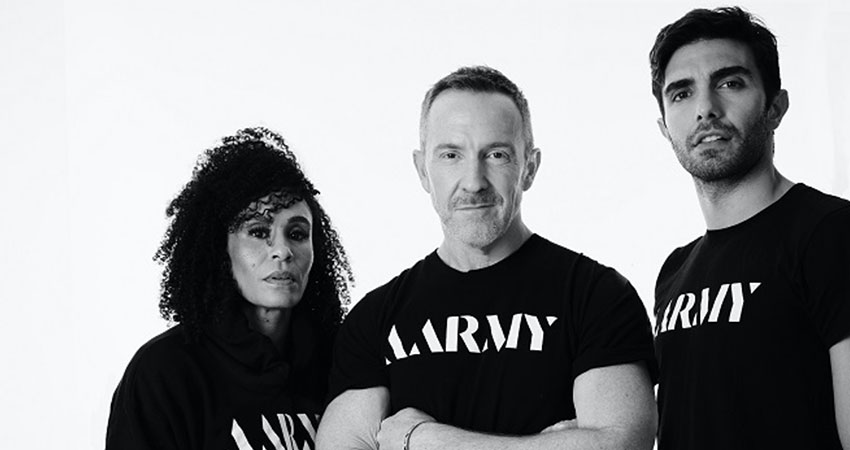The digitally native vertical brand (DNVB) is a rapidly growing business model, spawning successful and influential players many different industries. Examples include Glossier (beauty), Casper and Brooklinen (bedding), Hims (well care), Fabletics and Gymshark (athletic wear). DNVBs typically focus intensely on customer experience and control their own distribution.
In the wake of the COVID-19 pandemic, circumstances prompted many traditional brick-and-mortar businesses to adopt elements of the DNVB model. One company that adapted especially successfully is the premium fitness and coaching brand, AARMY.
Some industries are more naturally suited to produce brands that thrive as DNVBs. Recurring revenue products or services – monthly subscriptions or consumables – lend themselves to the model as user loyalty is more readily cultivated through repeated interaction. Industries with strong ties to influencer culture and that translate well to digital marketing are well-positioned to take advantage of how digital platforms and social media apps monetize influence and reach. Industries that fit this bill particularly well include fashion, beauty and fitness.
Therefore, when the COVID-19 pandemic hit mere weeks after AARMY opened the doors of its gyms in New York and Los Angeles, the company had some inherent advantages to successfully adapt to temporarily being a digital brand. To execute, AARMY went into beast mode. Today, the company boasts nearly 70K followers on Instagram, a successful digital platform and a subscription-based fitness and coaching program.
Examining AARMY’s transition reveals five lessons it took from DNVBs, especially ones like Gymshark, with similar target demographics, that were pivotal in maxing out on the opportunities presented.
Stretch Before Lifting
One does not simply walk into a gym and immediately attempt to lift the heaviest weight in the building. Today, AARMY offers classes through its website and app, charging subscribers a base rate of $35 per month, with additional premium options available. This model wasn’t fully built at the time the pandemic hit. AARMY bridged the transition by investing time to build a strong customer base, offering classes through Instagram’s IGTV to a global audience free of cost.
This approach was more in line with the social media-centric and influencer-based customer acquisition model that propelled DNVBs like Gymshark to success. Embracing social media as a vehicle for offering classes enabled AARMY to stay accessible and prove its value to customers while building the platform, studio and technology to enable a smooth transition to web-based operations.
Flexibility is Strength
Excessive focus on building strength at the expense of flexibility is dangerous; it makes one prone to injury, which can stop your training altogether. AARMY kept an eye on its goal while being flexible to adapt to circumstances. Building a digital platform wasn’t initially part of AARMY’s plan, but they were willing to and capable of pivoting.
At an organizational level, AARMY retained clarity in its greater goals – creating awareness and scaling the business while prioritizing health and safety. The team then did everything possible to adapt, turning their homes into gyms and teaching bootcamps for cycling and various other classes online. Their success was driven by a willingness to adapt while maintaining clear business goals – building both strength and flexibility.
Celebrate Other’s Gains
Whether you’re a business or a gym goer, you’re part of a community. Engaging, empowering and celebrating your community is a recognized best practice. AARMY launched with a special challenge: Those who completed 30 workouts in the first 30 days won exclusive branded gear. Challenges are a well-established core tool of DNVBs like Gymshark to increase community engagement among their users and brand loyalists.
As expected, the tactic worked for AARMY as well, motivating users and generating buzz. AARMY continues to make use of challenges, with followers eagerly share achievements and take pride in being showcased on the brand’s social channels. Community management is not a new requirement for growing a business. But in a remote environment it’s even more critical to understand the psychology behind drawing users to identify with your brand and cultivating loyalty.
Be Human!
There’s a social element to training. AARMY coaches engage with their users on a very personal level. In classes, they address participants by name, answer questions and react to comments for a live chat. This makes participants feel like individuals and helps to recreate the intimacy of in-person classes. “Being human” goes beyond simply personalizing your offerings. Show personality interact with users as individuals.
Build your Training Dream Team
A well-rounded fitness routine may include many types of activities with different types of trainers. To thrive, DNVBs need subject matter experts, digital natives and brand heroes, among other roles. AARMY’s coaches aren’t only qualified and experienced to train users at all levels; they are digital natives who understand how their audience uses technology practically, socially and interactively. That expertise is supplemented by top-level experts who help tell the brand’s story.
Among physical businesses, competition may be limited to brands offering similar services in proximity to yours, like other gyms in the same neighborhood, for example. However, online, your competition knows no geographic bounds, so developing a uniquely identifiable brand culture and strategy is more essential than ever.
Katrin Zimmermann is Managing Director at TLGG

